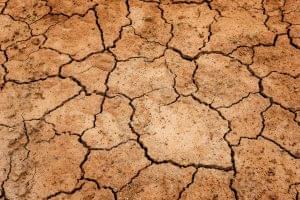The drought is so severe that the trees are begging the dogs! – online discourse on drought
After the dry months behind us, autumn and rainy weather finally arrived with the first of September. Based on the online discourse of the past year, the research team of Ynsight Research mapped the posts, thoughts, and opinions about the drought among Hungarian viewers. During the analysis using the netnography methodology, all public content appearing in the online space was analyzed: articles from news portals, blogs, TikTok videos, forum discussions, as well as public Facebook and Instagram posts and comments.

The discourse on the drought gradually built up (Photo: Pixabay)
At first, the press was only talking about the drought affecting the rest of the world, then the domestic drought
During the examined period, there were almost 90,000 publications about the drought. Although online mentions of the drought affecting Hungary have been present throughout the past year, at first we could read mostly reports from abroad, mainly about drying up rivers and water shortages in larger areas. In the Hungarian online press, the topic of drought started to emerge only from the end of May this year, the articles reported on the ever-decreasing water level of Lake Velence, areas turning into deserts, settlements struggling with water shortages, and problems affecting agriculture.
The main topics of the past months:
In June, the online discourse was mainly about the fact that there is still no prospect of rain: there were reports from all over the world about water shortages and dwindling rivers. A ban on lighting fires comes into force in our country, which is being extended to more and more counties. Based on the news portal articles and user comments, the situation is getting worse: the soil in the Alföld is bone dry to a depth of one meter, the grains do not yield half as much, so we have to expect an increase in prices, and there is a water shortage in Solymár. However, more positive events appeared in the internet discussions during the month: WWF and Telekom introduce a new rainwater retention system in five Hungarian settlements, and at the end of the month, the drought eased and a giant chain of thunderstorms formed over Hungary.
In July, the online news is about the record low level of the Tisza, due to the growing drought, the fire ban will be extended to the entire country at the beginning of the month. An important role in the discourse is also played by the theory spreading in the Alföld, an area most affected by drought, that rain avoids the lands due to the functioning of the anti-ice system. Although the National Meteorological Service firmly rejected the accusations, farmers’ dissatisfaction did not decrease, and the procedure was also strongly attacked online, the use of which was eventually suspended due to increasingly serious threats. The visible consequences of the drought have received a lot of attention in internet discussions: the receding of Lake Venice and the complete drying up of Lake Venice. In response to the drought situation, the government created the Drought Emergency Situations Task Force, whose decision, which was also widely mentioned by users, would improve the situation of farmers in trouble by introducing a five-point package.
In August, the news portals reported that because of the heat, more and more European countries are struggling to introduce the siesta, and in domestic terms, we have survived the driest seven months since 1091. The video content of Gergely Pápai, who traveled the country for weeks to present the extremely serious effects of the drought, also received a lot of attention this month. Among the users, the early yellowing of the green landscape often appears in conversations, and they also tried to draw attention to the deteriorating situation of wild animals. From the beginning of the month, more and more news reports about the farmers’ expected protest, the tractor parade planned for August 20, and then at the end of the month, the discussion was about the smaller-than-expected nature of the movement, without tractors.
The discourse took place mostly on news portals and Facebook
The largest proportion of online news portals reported on the drought affecting the entire world, while the second largest presence was Facebook appearances. On the most popular domestic social media platform, netizens could mainly come across posts from politicians and public life websites, and many news portals also shared their articles here, but users also mainly communicated about the topic on this interface. In most cases, the blogs in third place approached the drought associated with climate change from a political perspective.
People between the ages of 25 and 34 are mostly concerned about the lack of water
Looking at the age of the participants in the conversation, the chart below clearly shows that people between the ages of 25 and 34 dealt with the issue the most. Young people between the ages of 18-24 are not far behind them, while those over 35 were less and less encouraged by the topic to comment.
The high proportion of people under the age of 35 is mostly due to the fact that this age group shows an exceptionally high sensitivity to the topic of climate change and environmental protection: the representative survey of UNICEF Hungary has already revealed that young people between the ages of 13 and 25 are primarily affected by climate anxiety, while the WWF Based on Hungarian research, people between the ages of 25-34 are actively trying to protect our environment.
Hashtags are the most frequently used in discourse
Most of the hashtags used in the online conversation were of course connected to drought (#drought, #water shortage, #weather, #dryness, #heat, #forestfire), and hashtags related to the economic consequences of the drought period also appeared, such as #Ministry of Agriculture, #gazdaság, # agriculture. In addition to these, the hashtag #klímaválasző connecting the drought to the climate crisis is also often included in the discourse.
“We all die” or other times it happened that it didn’t rain
User conversations regarding the drought also started during the summer, with the number of mentions peaking between the end of July and the end of August. Commentators played an active role in the discourse, 38 percent of user comments (33,675 in total) of online references to the drought, indicating that the Hungarian population was strongly concerned with the problem.
Most of the commenters found the reasons for the drought, which is why there are so many narratives on the Internet. The idea that the situation is not the result of organic processes, but a deliberate, artificially induced disaster, appeared in the average online conversation viral-infectious high comment, similar to the explosion of the crown. Also, many people spoke about the mistakes in the regulations regarding the drought, a significant part of which resulted from the elimination of floodplains. The solutions proposed in the comments can all be linked to this: almost without exception, the users see the possibilities in the design of water reservoirs and the planting of drought-tolerant vegetation.
Many people wrote their own experiences and impressions about the seriousness of the situation, most commenters were worried about the state of the Great Plain and this year’s harvest. Several commentators spoke of a historically significant drought, several predicted a catastrophic situation, but there were those who were worried about the increased risk of fire. Despite this, there was no consensus among users regarding the seriousness of the drought situation, there were also plenty of those who thought “it’s all a hoax”, and it has happened on other occasions that it didn’t rain. The social aspect of the drought was also brought up in the comments, according to some of the commentators, the difficulties only affect the poor.
Many users on TikTok shared their experiences and thoughts about this summer’s drought. Farmers presented their drying plantations on the video-sharing platform, but several are also dealing with the difficulties caused by skyrocketing feed prices. Part of the report of the short videos related to the drought exposed the withered and ruined corn plantations to the public, “there is no need to harvest this anymore”, said one farmer. In the videos, not only agricultural difficulties were reported, many people were worried about the condition of Hungary’s smaller and larger lakes. Several people took pictures of the dried-up Vekeri Lake and stagnant streams, and Volt drew attention to the effect of the lack of water on wild animals and the importance of placing drinking fountains.
Related news
Reacty Digital research: Shrinking products, growing information
In Hungary, starting from March 1, 2024, larger food retailers…
Read more >Health in everyday life
A healthy lifestyle means different things to different people, and…
Read more >What do shoppers say about the new retail tools?
At the beginning of the year, Consumer Panel Hungary GfK–YouGov asked panel…
Read more >Related news
Scitec Nutrition launched an unusual image campaign with everyday heroes
In May, Scitec Nutrition’s “Fighters. They won. Your turn!” with…
Read more >KSH: in February, the product foreign trade surplus was 1.7 billion euros
In February 2024, the export volume exceeded 3.4 percent, while…
Read more >BMI: Slower expansion in April
The seasonally adjusted April value of the Purchasing Manager Index…
Read more >







